In 2011 Ineke Van Doorn and Jolande Geven started organizing professional development courses for singing teachers. In this article, written by Ineke Van Doorn, they reflect on their seven years of experience with professional development for singing teachers and they share their thoughts on teaching singing.
Working together
Prior to developing courses for singing teachers we had been working together for almost 25 years. From 1987 until 2000 as colleagues teaching amateur vocalists at a music school and in 2005 as colleagues at ArtEZ University for the Arts, Arnhem (Neth.) teaching vocal students in the pop & jazz department. In the late eighties we were among the first students to graduate from a conservatory as pop & jazz vocal teachers. Because our profession was so new, we had a lot to explore and to develop when we started teaching students in the pop and jazz domain. We both were very passionate about teaching and it felt natural to start working together. We collaborated on a host of things. Discussing each other’s students, asking each other for advice, referring students to each other, combining students’ concerts, developing curricula and designing workshops and group lessons. We even occasionally coached each other. This early collaboration has evolved into co-teaching methodology and group singing technique courses for first and second year students at ArtEZ University. In addition, we co-develop and coach our professional development courses.
Having very different backgrounds and approaches to teaching, we have always benefitted from our differences when we discuss or share our ideas and knowledge about vocal performance and vocal teaching. It has been our experience that all these years of working together has broadened, and continues to broaden, our perspective on teaching singing.
At the time of our graduation, singing technique was almost solely based on the Bel Canto tradition. Only a small group of teachers differentiated themselves by using techniques and exercises from speech methods like the Pahn method, Accent method and/or from theatre methods like Roy Hart and Freeing the Natural Voice. None of these approaches were widely known among singing teachers. By the end of the nineties the first Estill Voice Training (EVT) courses were organized, and a couple of years later Complete Vocal technique (CVT) was introduced. Because voice science is part of these approaches, it generated an interest among singing teachers in anatomy and physiology of the voice. In the Netherlands, the introduction of these two methods had a downside as well. Singing teachers and singers started to defend ‘their’ method as being the best, dividing the vocal world into opposing camps. Some schools (music schools and conservatories) started to ask for EVT or CVT certificates when they had a job opening, even though the applicant had graduated from an accredited conservatory. Because this was still more or less the case in 2011, when we started to organize our professional development courses we made it reflect in our enrollment criteria and curriculum (more on this below).
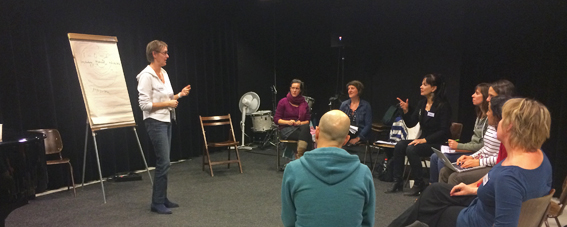
Starting point
Courses for singing teachers of all styles and approaches
When we started to organize our courses we wanted to create an opportunity for singing teachers to get out of their teaching studio and to share and develop their knowledge about the different subjects related to teaching singing.
Because the vocal world was quite divided at that time, we also realized the need for opening up this situation. It is our opinion that choosing a certain approach or musical style does not necessarily make you a better singing teacher. Rather, there is something to gain and learn from either approach and style. Therefore, we decided that our courses would be open for singing teachers of all styles and approaches. We are still actively promoting this approach.
Focus on methodical subjects
Another starting point was to focus on methodical subjects. As Katherine Verdolini states there is a distinction between ‘knowing that’ and ‘knowing how’ (Verdolini – Principles of skill acquisition. Chapter 8 ‘The Vocal Vision’, Applause Books 2000). As much as we underline the importance of knowledge about vocal function, this knowledge in itself does not necessarily make you a better singing teacher. Most courses for singing teachers that were already in place in 2011, were courses addressing singing/voice technique (EVT, CVT, Pahn). Actual pedagogical knowledge on teaching singing, and practical courses on how to turn a singing lesson into a music lesson versus a lesson that focuses on singing technique were hard to find. For this reason, we chose to concentrate on these pedagogical subjects.
Focus on practical courses in small groups
Another decision we made was to offer courses that were very hands-on and practical in nature. To accomplish this we had to keep our group size relatively small (typically not more than 12 participants) so everyone could have an active part. A smaller group size would also better facilitate the exchange of ideas between participants and create a greater opportunity to learn from each other.
Unaccredited singing teachers are welcome
Initially the courses were only open to teachers that had graduated from a conservatory or pop/rock academy, but we changed our mind soon after we started. There are quite a number of unaccredited singing teachers who would like to develop their teaching skills. We think that it is in everybody’s interest to give them the opportunity to participate in our courses. We currently accept singing teachers without any formal education if they have at least 5 years of teaching experience.
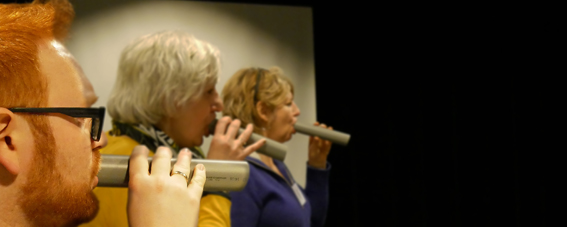
Courses and Specialisms
Between January 2011 and June 2018 we have organized 37 Practice Days and 9 Guest workshops (more about Guest workshops later). In addition, we have been engaged to give one-on-one sessions, or coach medium to large groups (i.e. groups of music teachers). Thus far, more than 500 participants have attended our courses. In the appendix you will find an overview of our activities.
Even though we were the first in the Netherlands to offer professional development courses for singing teachers, we came to find out that there wasn’t much interest. The idea to step out of your own teaching studio to take a course and to meet colleagues was quite new. Since then, the interest has been growing steadily and the feedback we received, and still are receiving, is very positive and encouraging.
The Practice Days course encompasses a variety of pedagogical subjects and working methods. It was initially offered as a 4-day course. After we learned that only a limited few were able to commit for 4 days and to bear the cost, we redesigned the course by making it, stand-alone, single day events. Currently, each Practice Day has a different theme and associated pedagogical subjects and working methods. This approach is working well for the participants and us.
On a regular base we have been inviting guest teachers who offer an additional approach to what is already available in the Netherlands: high level, mostly internationally well-known, teachers that have a well-developed and clear vision on teaching singing that fits our aforementioned starting points like Meribeth Dayme, Bob Stoloff and Gillyanne Kayes & Jeremy Fisher. Guest workshops are very popular and attract a wider variety of teachers that are often more experienced as well. In the appendix you will find more examples.
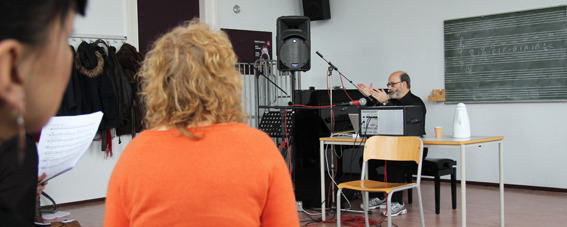
Our participants are typically between 30-60 years old, with the largest group around 45 years of age. Sometimes we see the latter shift to a lower age depending on the theme of the Practice Day.
In the beginning we c0-taught the courses. It was a good way to start: preparing and evaluating the courses together was a very valuable learning experience from which we benefitted a lot. The participants were beneficiaries as well by demonstrating them how our different approaches and teaching styles can work. Nowadays we only occasionally are teaching courses together, depending on the subject.
As explained above we focus on pedagogical subjects. Our specialties are:
- The methodic buildup of a singing lesson;
- Teaching styles: Instructing versus coaching;
- Diagnosis of the student’s proficiency level regarding; singing technique, music theory, musicality, rhythm/timing, etc.
- Teaching aforementioned subjects on a low level;
- Designing a learning line based on the diagnosis;
- Teaching group lessons;
- Teaching adolescents;
- Connecting voice and body;
- Improvisation used as a teaching tool;
- Teaching breathing technique;
- Pop singing for classical teachers;
- Making a connection between interpretation and singing technique;
- Using vocal function knowledge in practice.
Our Vision
There are certain qualities and skills that we find essential when working with singers.
The Teacher
- No teacher is perfect and no one needs to be perfect, however awareness of your own strong points and your working points makes it easier to interact with students.
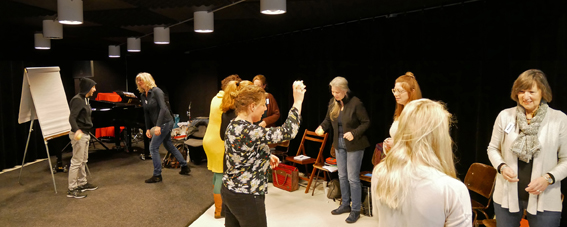
- Knowledge of vocal function is important, especially when different students require different approaches to advance.
- Awareness and the use of different teaching styles and working methods:
- Transferring knowledge through instruction is equally important as coaching and questioning the student, also when working at singing technique.
- The same is true for working from skills and working from emotion because these working methods connect singing technique and interpretation.
- As a teacher it is important to be able to analyze the student’s strong points and working points and to incorporate these findings in a learning line.
- It is very helpful to be able to recognize when to use different learning styles: VAK (Visual, Auditory, and Kinesthetic).
- Improvisation is a great teaching tool and can be used regardless of the style that is being sung.
The Singing Lesson
- The goal is to work towards the student’s independence so that s/he is capable to function on her/his own as a musician. For this reason music theory, general musical skills, improvisation, playing together may be integrated in the lesson. In this way the singing lesson becomes a real music lesson with a focus on the development of the student as a musician.
- Praising the student’s strong points and being honest about her/his working points is key, however, the latter should be done respectfully and tactfully.
- Being open to the student’s ideas is a must.
- The teacher is responsible for creating a safe learning environment. The student should feel free to make mistakes.
- Feedback should be clear and to the point and not be personal. It should be about the student’s performance, not about her/his personality.
- The repertoire should meet the student’s interest and capacities. The student should also be exposed to new and more challenging material.
- Address the whole person and engage voice and body.
Some Trends
We noticed that there is more interest in courses on subjects that are related to singing technique than other subjects we offer. For many singing teachers, teaching singing technique is the main subject of their lesson.
When we started in 2011 many music schools were funded by the government. These schools would refund the course fees to teachers who participated in our courses. Having the course paid for provided an additional incentive for teachers to attend. During the economical crisis a vast majority of the music schools lost their funding. Some turned into private schools, others closed their doors. During that time course enrolment decreased, with its lowest point in 2014. After 2014 we started to see an increase in enrolment again. This increase was notably fueled by singing teachers with a private practice. They used our courses to invest in themselves as a singing teacher.
Group singing lessons were typically a common practice at music schools. Because the number of music schools went down dramatically, the interest in subjects related to teaching group lessons went down.
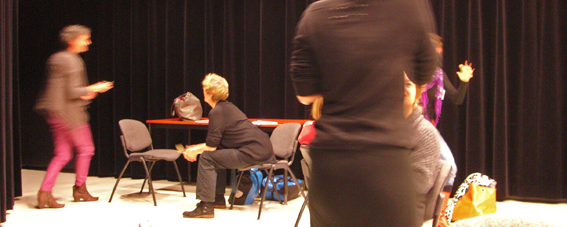
Observations
- Teachers with different stylistic backgrounds and who are using different approaches are taking part in our courses. This has never caused any problem. On the contrary: The feedback that we receive is that participants love the open, non-judgmental atmosphere.
- It is interesting to note that in our courses teachers that have graduated from a college or university are not standing out as better teachers in comparison with the unaccredited teachers. Occasionally, we will notice a lag in theoretical knowledge and skills, like sight reading, among the unaccredited teachers.
- Participants are generally very positive about our collaboration because we have a different way of working, are both successful with it and in the same time we respect each other’s approach. In this way participants are experiencing that there isn’t just one truth and they are feeling entitled to develop and explore their own teaching styles.
- Participants don’t only learn from us: they find it very inspiring to meet colleagues and learn from each other by exchanging individual experiences. (Similar to the experience when we started).
- It is often the case that during the course, participants become aware of their strong points resulting in a feeling of empowerment. This empowerment renews their energy and motivation and raises their confidence level the point where they challenge themselves by trying out new things with their students.
- Most participants return to take another course.
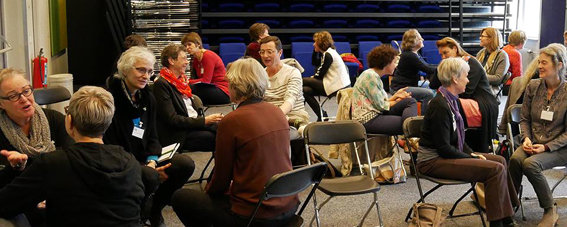
Conclusion
In our courses we create an open and safe environment to learn. There is a lot of interaction and discussion among all involved: participants teach each other, receive feedback from both the teachers and the other participants. We notice that participants open up and experience that learning is fun! But more importantly they acknowledge that there isn’t just one right way to teach singing and that you can develop your approach to teaching by expanding your knowledge. In this way our courses offer an informal, practical form of peer consultation.
As a follow up of our Practice Days we developed Peer Consultation Process workshops (also called Intervision). We have worked twice with members of the Dutch Singing Teachers Association (NVZ) and will soon work with the European Voice Teachers Association (EVTA) Council. We not only see that peer consultation offers great opportunities to singing teachers for quality improvement and professionalism but that it also met with great enthusiasm. The NVZ is now facilitating 6 peer consultation groups and offers these groups coaching by van Doorn & Geven.
A new wind is blowing: singing teachers are opening up their doors and are exchanging their knowledge and experience more and more.
August 2018
Ineke Van Doorn and Jolande Geven
Appendix 1 Activities
Practice Days
Examples of Practice Days we organized:
- Improvisation as a Teaching Tool in the Singing Lesson
- Teaching Adolescents
- Teaching Breathing in the Singing Lesson
- Circle Songs and Graphic Scores
- Classic Meets Pop
- Developing a Personal Interpretation
- Developing a Coaching Teaching Style
- Jazz and Bossa Nova for Beginners
- Being a Teacher
- Working at Singing Technique in a Methodical Way
- Teaching Singing to a Group
- Singing with Power, Belting, Sound
- The Blues in the Singing Lesson
- The Singing Body
- Vocal Arranging and Accompanying Singers
- Working with Different Levels in a Duo and Group Lesson
- Improvising and Soloing
- Dealing with Vocal Registers and the Voice Break
- Harmony Singing and the Vocal group
- Anatomy and Physiology of the Voice in Practice
- Singing with a Microphone and Amplification
Guest Teachers
Guest teachers that we invited:
- Bob Stoloff (USA) – vocal improvisation
- Meribeth Dayme (USA) – Core Singing method
- Gillyanne Kayes en Jeremy Fisher (UK) – Masterclass Musical Theatre Singing
- Herman van Doorn (Neth.) – Using Speech Therapy methods in the Singing Lesson
- Herman van Doorn (Neth.) – Tools for the Singing Lesson
- Bart Fermie (Neth.) – Patempa: rhythm, movement and voice.
Individual coachings and courses for external parties:
- Workshops on the Peer Consultation Process for the Dutch NVZ (Singing Teachers Association);
- A day on ‘Improvisation as a Pedagogical Tool’ for the instrumental and vocal teachers (classic and CCM) of Muzarte, Essen (Belgium) and for the teachers of Music School Waterland, Zaandam (Neth.);
- A 3-year coaching for the singing teachers of ‘De Lindenberg’, Nijmegen (Neth.)
- 1-year coaching for the ensemble teachers of De Lindenberg, Nijmegen (Neth.);
- Lecture on the different Singing Methods for the teachers of Mc Nally Smith College of Music in St. Paul (USA).
- Individual coaching about teaching singing (with student);
- Individual coaching about singing technique and stylistic issues;
- Coaching on working with choirs;
- Coaching on designing a workshop.
Appendix 2 About Ineke Van Doorn and Jolande Geven
Together Ineke van Doorn and Jolande Geven share more than 60 years of vocal pedagogical experience. They both graduated as jazz singers, Ineke holds a master degree. In addition, Jolande is trained as a communications trainer and developed a peer consultation program for the music teachers of ArtEZ University of the Arts.
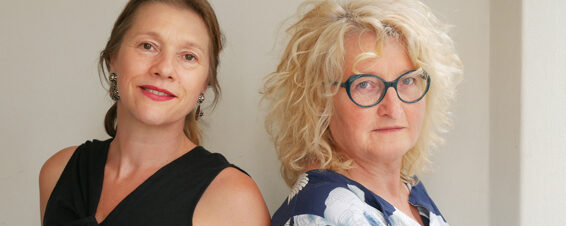
Ineke wrote the highly acclaimed book ‘Singing from the Inside Out’. Jolande and Ineke have been working together since 1987, first at a music school and later at the ArtEZ Conservatory, Arnhem, The Netherlands. In 2011 Ineke and Jolande started organizing professional development courses for singing professionals. They have been teaching several Peer Consultation Process workshops for the Dutch NVZ and for the EVTA. Ineke served on the board of EVTA for 6 years.
Website Van Doorn & Geven
Music education, coaching and advice